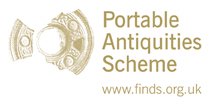Server check!
You are on the training database
Ingots
Ingots are pieces of metal which have been formed into particular shapes to be transported and traded and then later cast into objects. Bronze Age ingots were created in a variety of shapes and sizes including cylinders, rectangles and 'bun' or 'cake' shapes, however, most are discovered in a fragmented state and difficult to date.
Dating and areas od discovery
Date: 1000 - 800 BC
Distribution: Britain
Plano-convex (a.k.a. 'Bun' or 'cake') Ingots
These bronze and copper objects are called Bun ingots as they are almost flat on one side and rounded on the other. They are quite craggy and are often found broken into a number of rough fragments. Bun ingots are the most common type of ingots found in the Britain.
Example
Plano-convex ingot SUSS-ADE0A8

Bar Ingots
Long bars, with a square or rectangular cross section.
Example
Bar ingot LIN-57FEA1

References
- O'Connor, B. (1980)`Cross-Channel relations in the later Bronze Age: relations between Britain, NE France and the Low Countries during the Later Bronze Age and the Early Iron Age, with particular reference to the metalwork' BAR International Series British Archaeological Reports Oxford S91(i-ii).
- Tylecote, R.F. (1962) Metallurgy in Archaeology: A Prehistory of Metallurgy in the British Isles. London: Edward Arnold Ltd.


